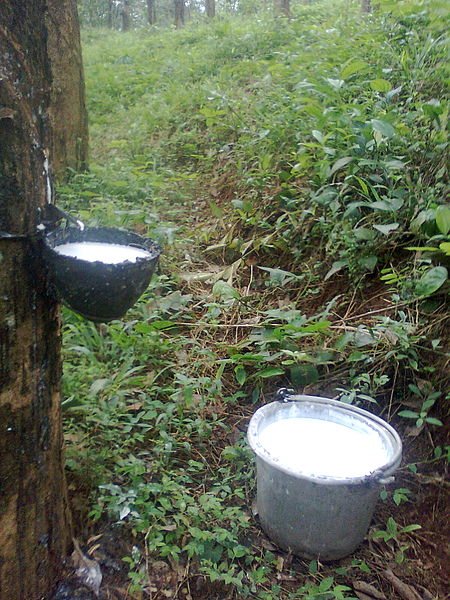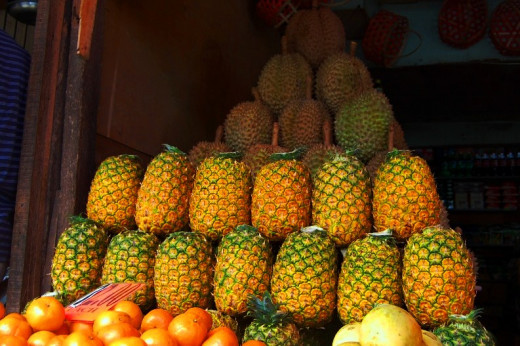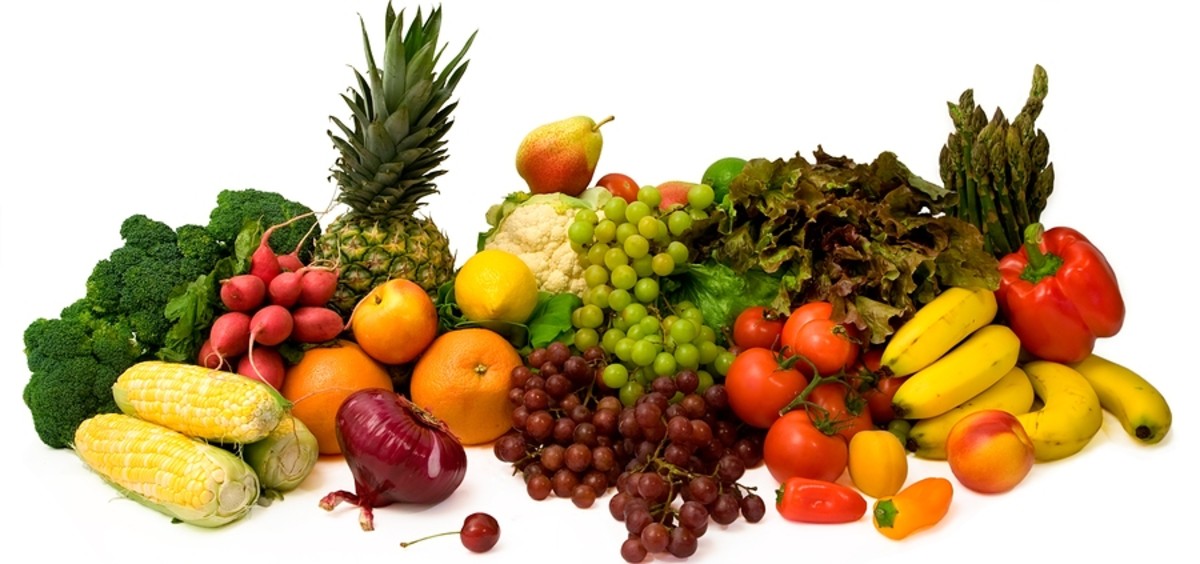A Connection Between Latex, Fruit and Nut Allergies

Copyright 2012 - Kris Heeter, Ph.D.
According to estimates from the Asthma and Allergy Foundation of America, nearly 6% of the United States population has some form of food allergy and as many as 4% has a latex allergy.
On the surface, these two allergies may not seem related, but there is now strong evidence that there can be a type of cross-reaction between latex and some fruits and nut allergies. It's been found that those with a latex allergy may likely be allergic to some fruits and nuts - a health issue referred to as the "latex-fruit allergy syndrome".

Latex allergies
Latex is the natural sap that comes from the rubber tree Hevea brasiliensis. The sap is used to make the natural rubber that is found in more than 400 medical products in the United States and in over 40,000 other commercial non-medical products.
These products contain two classes of substances that can cause reactions:
1. chemical antioxidants
2. natural proteins
The chemical antioxidants can cause contact dermatitis reactions and the natural proteins can cause systemic allergic reactions in certain individuals. Hypersensitivity can occur in these individuals - a reaction caused by the development of IgE antibodies to specific proteins in latex. Depending on the level of hypersensitivity, the allergy can be serious and potentially lethal.
Latex can enter the body a number of ways:
- via mucous membranes
- contact with the skin
- exposure through open wounds
- contact with internal organs during surgery
- intravenous exposure
- inhalation of latex powder
Fruits and Nuts Potentially Associated with Latex Allergies
The following fruits and nuts have been associated with this syndrome.
- Banana
- Pineapple
- Mango
- Passionfruit
- Strawberry
- Kiwi
- Avocado
- Chestnut
- Celery
- Bell Pepper
- Pear
- Apricot
- Buckwheat
- Cherry
- Fig
- Grape
- Melon
- Nectarine
- Orange
- Papaya
- Peach
- Plum
- Tomato
- Potato
- Walnut
- Peanut
In addition, soy and soy products have also been associated with this syndrome.
IMPORTANT NOTE: Keep in mind that some of these are rare associations. Depending on the person with the syndrome, only one or two of the whole foods listed above may be associated with a latex allergy and which ones can vary from person to person.

Which Allergy Came First?
One question that researchers have looked into with this syndrome is whether the latex allergy comes first and later triggers the fruit/nut allergy or vice versa.
Interestingly, studies suggests that the fruit-latex syndrome can occur in two ways:
1. A fruit/nut allergy (to one or more of the above) can trigger a previously undiagnosed recognition of the latex allergy
2. After years of latex exposure and latex sensitivity, one can develop fruit/nut allergies
So the answer really is either one can be the initial culprit.
If an allergy to latex or one or more of the fruits and nuts listed above is suspected, an allergy specialist can perform skin tests to confirm which of the allergens (specific fruits/nuts) associated with the fruit-latex syndrome a person is most likely to have an allergic response to.
One hypothesis for the cross-reactivity seen in the fruit-latex syndrome is that there are proteins (or parts of proteins) in the rubber sap that are structurally similar to different proteins in the fruits and nuts. Several types of proteins have been identified as potentially being the culprits.
Keep in mind that with any allergy, they can develop slowly over time. Someone who may be allergic to latex may not be allergic to any of these fruits or nuts now. However, an allergy to one more of the fruits and nuts listed above could later develop five, ten, or fifteen years form now. Or the person may never develop an allergy to any of these fruits and nuts.
It's a very strange and diverse syndrome!
Related References
“Allergy Facts and Figures,” - Asthma and Allergy Foundation of America
Binkley et al. (2003). Latex Allergies: A Review of Recognition, Evaluation, Management, Prevention, Education, and Alternative Product Use. J Athl Train. 2003 Apr-Jun; 38(2): 133–140.
Brehler et. al. (1997). Latex-fruit syndrome: frequency of cross-reacting IgE antibodies. Allergy 52 (4): 404–10.





